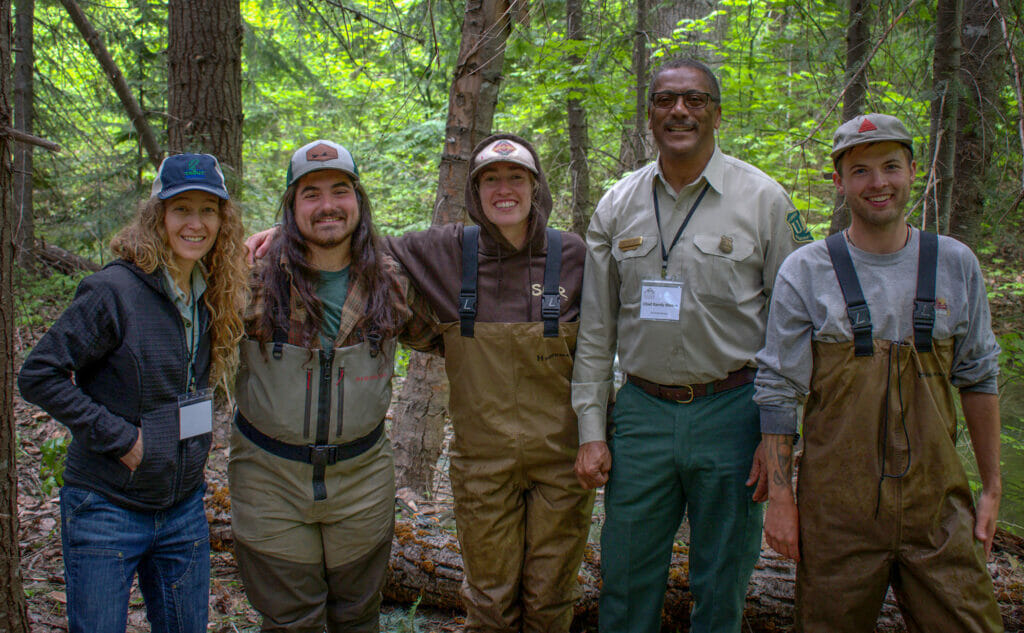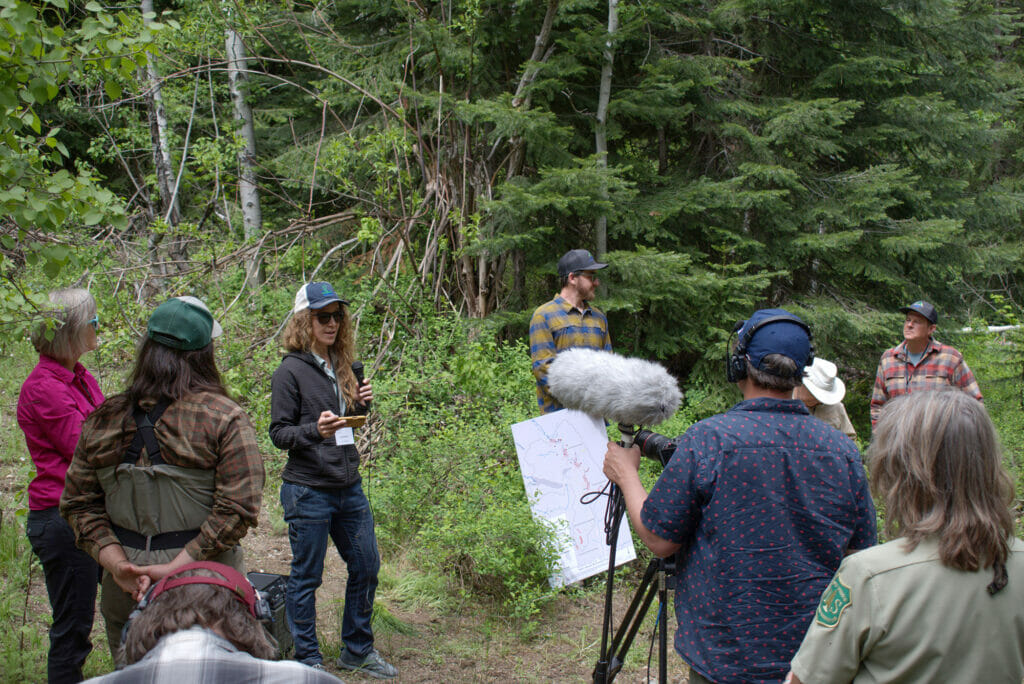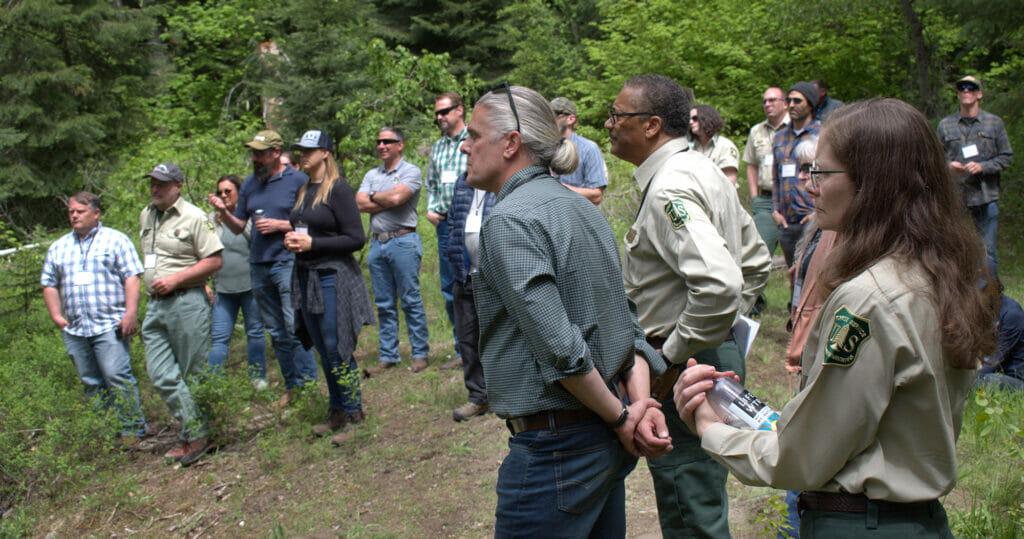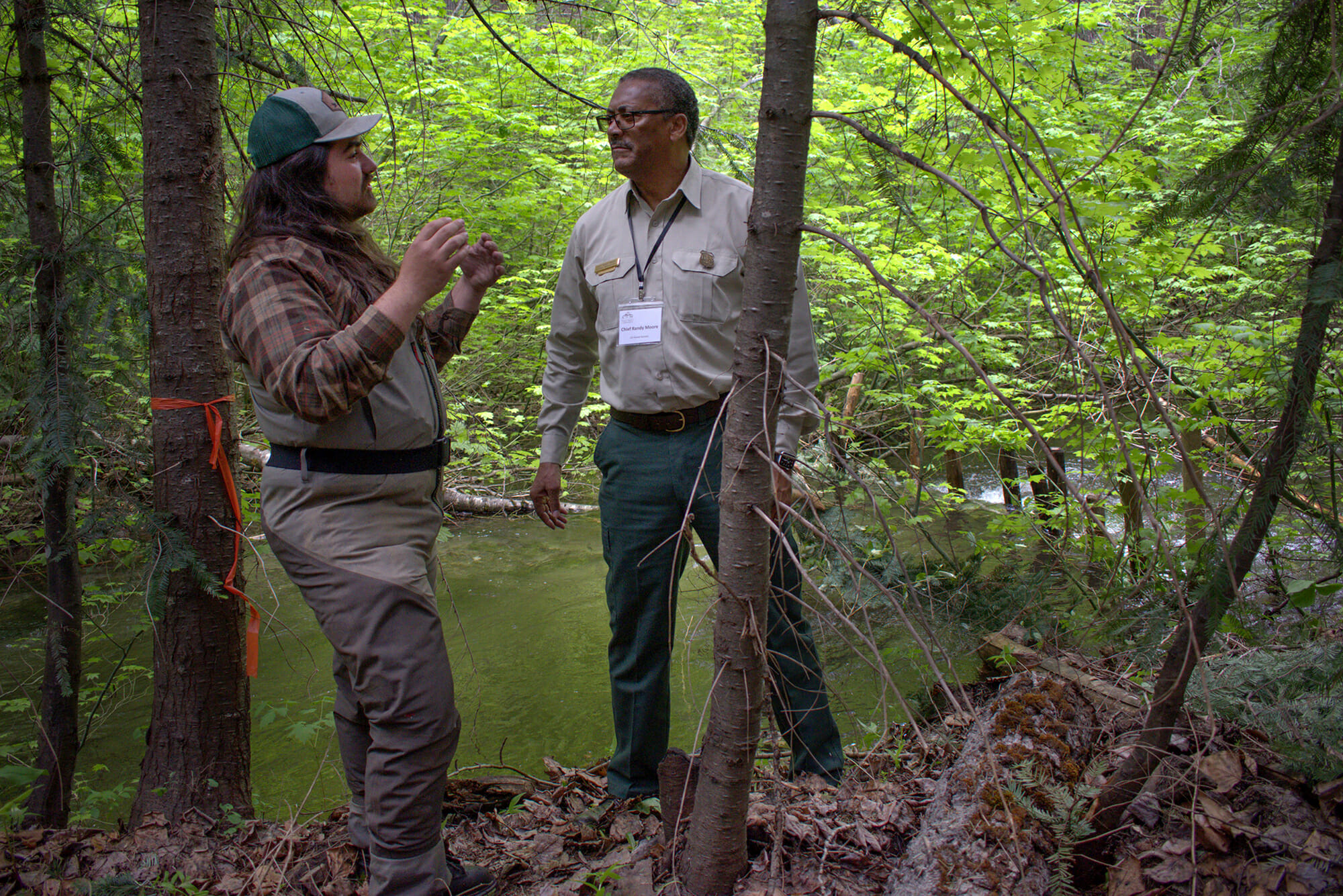USFS Chief Moore gets a firsthand look at TU restoration work in the Okanogan-Wenatchee National Forest.
The eastern slopes of the Cascade Mountains in North Central Washington are one of the epicenters for catastrophic fire risk in the Western United States. Climate change, tree disease and over a century of forest mismanagement are to blame. In recognition of this risk, the Forest Service recently launched the Central Washington Initiative (CWI) in the Okanogan-Wenatchee National Forest as part of its national Wildfire Crisis Strategy. This important work is supported by $100 million of funding through the Bipartisan Infrastructure Law.
The CWI is one of approximately 20 initiatives of its kind across the nation receiving this unprecedented investment through 2026. These initiatives represent an “all lands, all hands” approach to addressing forest health and wildfire resilience, meaning the Forest Service sees partnerships as the key to success. TU’s $40 million keystone agreement with the Forest Service is a perfect example. Through this partnership, TU will be implementing many of the aquatic components of this work and other critical efforts benefiting wildfire resilience and coldwater habitat recovery on National Forests across the country.
Collaborating to Reduce Wildfire Risks
The risk for catastrophic fire in North Central Washington is well known to TU and other members of the North Central Washington Forest Health Collaborative (NCWFHC) who have been working on the issue of forest health in this region for more than a decade. During this time, NCWFHC partners have been frantically building solutions while bearing witness to the biggest wildfires in Washington State history. To say there is a sense of urgency surrounding this work is a wild understatement.

Developing and implementing innovative approaches to helping the Forest Service increase the pace and scale of restoration on the Okanogan-Wenatchee National Forest has been NCWFHC’s key objective, and we have made significant progress in recent years. Enough progress, it turns out, to entice the Chief of the Forest Service, Randy Moore, to come out and see it with his own eyes in late May.
As part of the NCWFHC’s tenth anniversary celebration, we had the honor of hosting Chief Moore on a field tour of some of the Collaborative’s project sites.
Working to Keep Water on the Landscape
One of the stops on the NCWFHC tour was at TU’s beaver dam analog (BDA) project on Alder Creek, outside of Leavenworth Washington. This work is led by staff from TU’s Wenatchee-Entiat Beaver Project. TU’s Lisa Foster and Michael Dello Russo were on site to answer questions and demonstrate the work to partners and USFS staff.

I’m biased, but the site visit seemed to be a highlight for Chief Moore given his willingness to thrash through thick brush and endure heinous mosquitos to get an up-close view of the project. We got to talk about how low-tech process-based restoration techniques, like BDAs, expand floodplain connectivity, improve late season flows and increase soil moisture in riparian zones to create fire breaks in an otherwise parched landscape. Michael Dello Russo and his crew were also able to demonstrate how these structures get woven together with streamside trees. The Chief seemed so impressed with the work that he hinted at returning when we extended an invitation. We hope he takes us up on it.

We want to thank all of the NCWFHC partners for their ongoing work and for making the anniversary tour such a success.
Thank you, Chief Moore, for taking the time to join us in the field. We are grateful for your enduring support of this important work in North Central Washington forests and watersheds!


